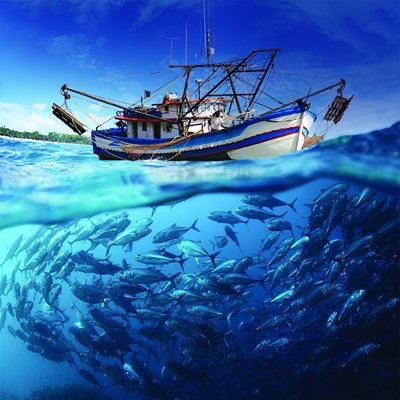A new UNCTAD study examines the development potential of the fishery sector in selected Least Developed Countries in Africa and Asia, providing policy recommendations to overcome challenges on both the supply and demand sides.
Fish is one of the world's most traded food commodities and, with the global population growing to an expected 9.7 billion people by 2050, demand for it fish also expected to increase. That offers valuable trade opportunities. In addition to human consumption, industrial need for fishery resources is projected to rise in the coming decades due to growing demand for fish oil and animal feed.
Wild catch alone will not sustain the increase in demand for fish. There should be deliberate actions by Least Developed Countries (LDCs) to enhance aquaculture development so as to meet the increase.
The UNCTAD study documents that, over the last three decades, global aquaculture production has tripled, growing at an average annual rate of 8.3 per cent. In 2014, aquaculture constituted 46 per cent of world fish production compared to 26 per cent in 1994.
Fishing, both coastal and inland, holds significant potential for socioeconomic development for a number of LDCs. Many have comparative advantages in fishery resources due to a combination of low-cost labour and waters rich in highly-prized varieties of fish.
The social, economic and environmental benefits of the fishery sector are substantial. In addition to creating employment and increasing foreign exchange earnings, fishing provides a major source of protein in many LDCs and is important for improving food security. The study urges governments and stakeholders in LDCs to view the fishery sector as a key driver in enabling the countries to meet the Sustainable Development Goals (SDGs).
The fisheries sector is also a viable alternative to manufacturing as a source of export-led growth. Developing countries as a whole have substantially increased their share in world fishery exports, from 34.6 per cent in 1981 to 50.2 per cent in 2013. However, despite their ample fish stocks, not many LDCs have been able to follow suit, and their share in global fish exports has only risen marginally, from 1.6 to 3.5 per cent in the same period. The work of UNCTAD reveals that the fishery sector in LDCs remains predominantly traditional or artisanal.
In its research, UNCTAD presents case studies of six of the world's 47 LDCs — Bangladesh, Cambodia, the Comoros , Mozambique, Myanmar and Uganda — and identifies a series of supply-side and demand-side challenges undermining the role of their fishery sectors.
On the supply side, the main challenges are deficient transportation and storage facilities; poor energy infrastructure and high electricity costs; a lack of investment, finance or credit for small operators; overfishing and depletion of fish resources; water pollution; and a lack of common fishery policies among countries that share water resources.
On the demand side, LDC fish products face few or no tariff barriers in developed country markets. However, the biggest non-tariff trade barrier for producers and processors from LDCs are the stringent quality and safety standards systems imposed on fish products in major overseas markets, instituted in the 1990s and 2000s.
The study argues that stringent public safety norms are often compounded by further cumbersome private quality and safety standards. The confluences of public and private standards have effectively restricted access to major importing markets for many LDC fishery exporters.
This is mainly due to the fact that standards are not harmonized and are costly for LDCs to meet. It is also due to structural problems in LDCs, including in processing facilities and procurement methods, as well as a lack of testing and certification of products throughout the value chain.
The study provides policy conclusions and recommendations aimed at helping LDCs to realize the full development potential of their fisheries sectors, including the provision of infrastructure, the improvement of regulatory and institutional capacities, monitoring and regulation of domestic fishing, and the harmonization of international standards.
The study is the result of the implementation of the Development Account Project titled: "Building the capacities of selected LDCs to upgrade and diversify their fish exports". The project has been implemented in Cambodia, Comoros , Mozambique, Myanmar and Uganda.

